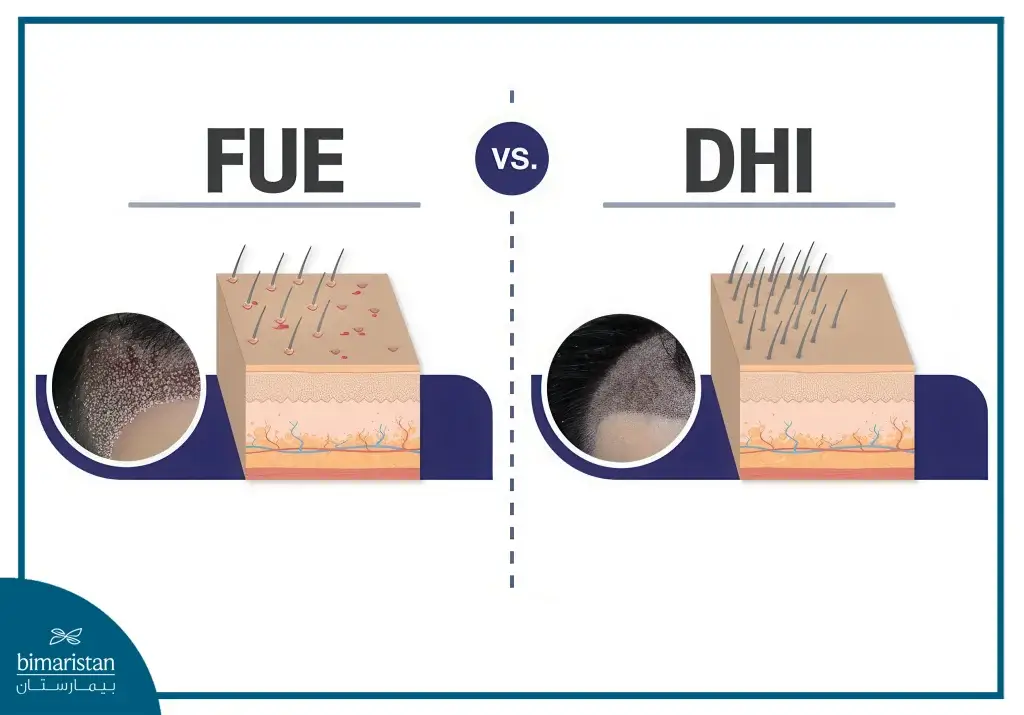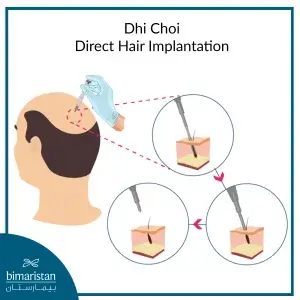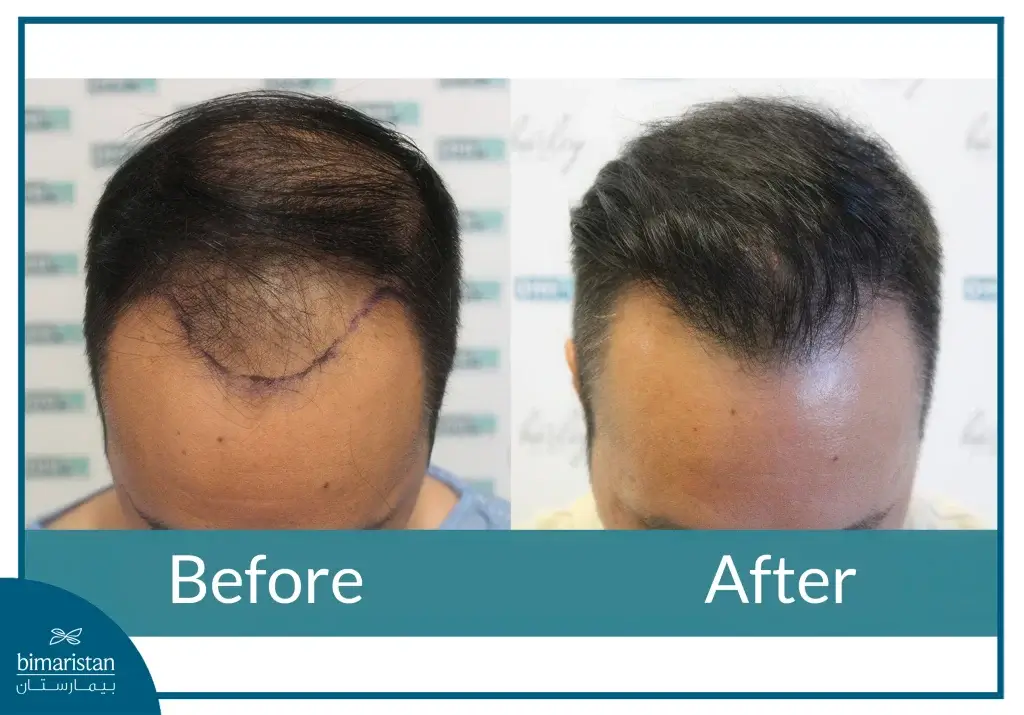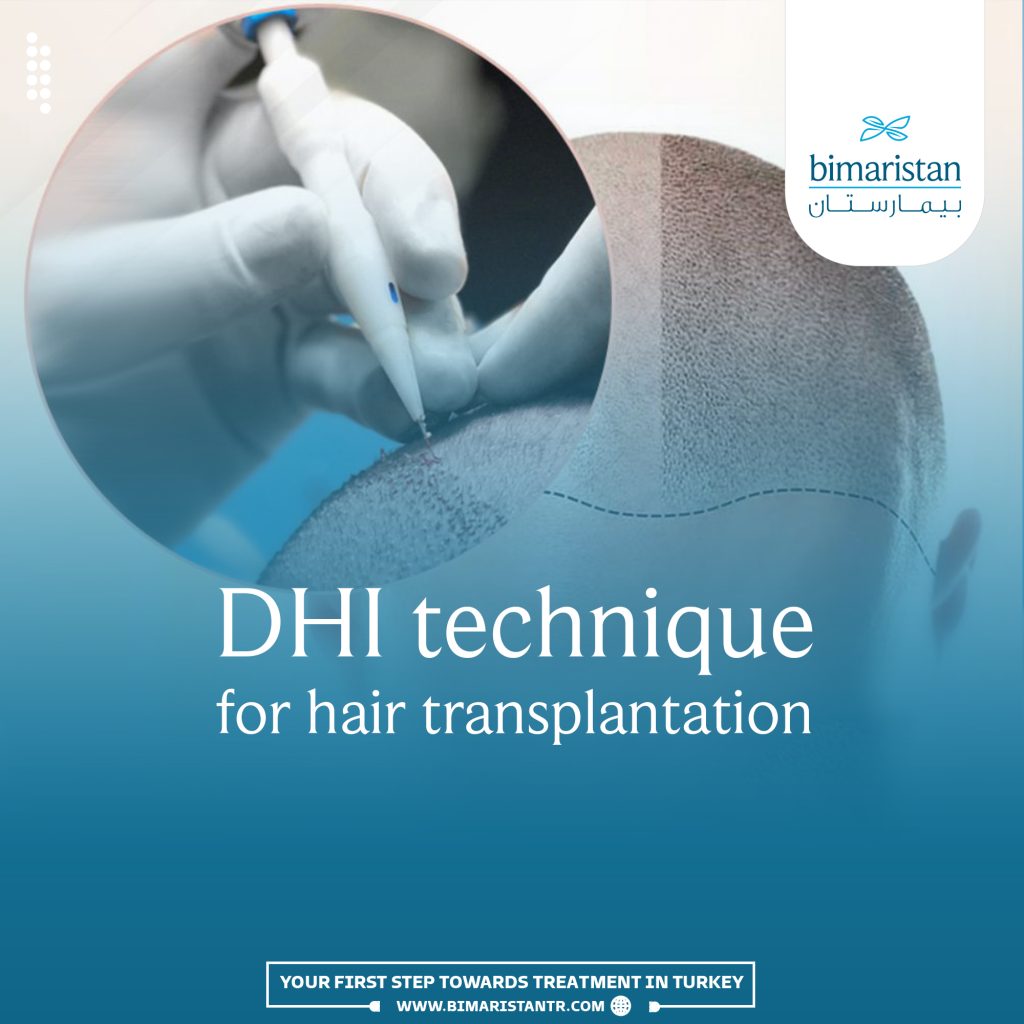DHI hair transplantation is considered the latest technique performed in the plastic field in Turkey, which had a great role in solving the baldness problem.
More than 85% of men suffer from hair thinning and loss by age 50, and more than 50% of women will experience noticeable hair loss at some point in their lives. Therefore, it is necessary to resort to a permanent and radical solution to treat this problem: hair transplantation, especially the DHI technique.
Such procedures were initially performed through complex methods with unsatisfactory results and some complications. However, with medical advancements, hair transplantation procedures like the DHI technique have become comparable to natural hair, especially in Turkey. In this article, learn about the details of the DHI technique for hair transplantation and for whom it is performed in Turkey.
What is DHI hair transplantation in Turkey?
The DHI hair transplantation technique, also known as Direct Hair Implantation, is a modification and advancement of the FUE (Follicular Unit Extraction) technique. In the DHI technique, a tiny strip of hair is separated from the donor area and implanted directly into the balding area.
The DHI hair transplantation technique is a non-surgical alternative method not involving surgical scalpels. Instead, a specific device called a Choi pen is used. This is why this is called the DHI Choi pen technique for hair transplantation.
The Difference between FUE and DHI hair transplant techniques
The DHI hair transplant technique is an advancement and update of the widely used FUE technique in this field. Therefore, it is essential to compare the key differences between these two techniques, as shown in the following table:
| DHI Hair Transplantation | FUE Hair Transplantation |
| Extraction and implantation of hair follicles are done simultaneously. | Extraction and implantation of hair follicles are done in separate steps. |
| No use of sharp surgical tools. | Use of sharp surgical tools. |
| No need to shave the hair. | Hair must be shaved. |
| Shorter procedure duration. | Longer procedure duration. |
| Approximately 80-90 follicles are implanted per square centimeter. | Approximately 60 follicles are implanted per square centimeter. |
| Blood pressure and blood sugar levels do not affect the procedure. | A micromotor is used to soften follicles before extraction. |
| The procedure is affected by blood pressure and blood sugar levels. | Micromotor is used to soften follicles before extraction. |

The difference between the sepphire and the DHI technique
| Element | Sepphire Technique | DHI Technique |
| Technique | extraction of follicles followed by implantation | direct implantation of follicles using a specialized device |
| Extraction method | individual follicle extraction or small follicular group extraction | extraction using a Choi implant pen |
| Device used | No specific device; fine instruments are used | The Choi Implanter Pen is used |
| Implantation precision | depends on the skill of the surgeon and technicians | provides high precision in follicle implantation |
| Prevalence of use | widely used and commonly relied upon in hair transplantation | increasingly popular as a modern technique |
This table summarizes the differences between the Sapphire and DHI techniques in hair transplantation.
Who undergoes DHI hair transplantation?
Many medical and cosmetic reasons drive people to undergo hair transplantation using the DHI technique, or what is known as the modified technique of FUE. The most prominent of these reasons include:
- Androgenetic alopecia (male pattern baldness): This genetic condition primarily affects males and rarely affects females due to its association with male hormones. It is considered one of the most common causes of hair loss. Still, it is worth mentioning that direct hair transplantation using the DHI technique has achieved significant benefits in treating genetic baldness.
- Wounds and skin burns, especially if they involve a large scalp area.
Preparations for DHI hair transplantation
Necessary precautions must be taken before any intervention, even a minor one, to avoid complications during or after the hair transplantation procedure. The most important of these procedures are:
- Complete blood count (CBC) analysis, including red and white blood cell counts and platelets.
- Blood gas analysis and blood sugar level.
- Liver function analysis (ALT, AST).
- To prevent any bleeding, many medications, especially blood thinners, must be stopped.
- Improve tissue perfusion by drinking fluids and stopping smoking for two weeks before the procedure.
Steps of DHI hair transplantation (modified FUE) in Turkey
There are several steps involved in performing a direct hair transplantation procedure using the DHI technique after the patient is admitted to the sterile operating room. These steps, in order, are:
- The doctor starts by sterilizing the donor and recipient areas of the hair to prevent infection.
- The surgeon then administers local anesthesia to both the donor and recipient areas of the scalp using 2% lidocaine with adrenaline to prolong the effect of the anesthetic used.
- The locations of the grafts to be harvested from the donor area (usually from the back of the scalp or the sides) and the transplant locations in the bald or recipient area are determined, along with the creation of small holes representing the recipient sites using an excellent needle.
- The surgeon then extracts a small strip with a diameter of about 0.5 mm using a Choi pen and directly implants it into the previously prepared recipient sites (no surgical scalpel is used to open the skin). The extraction and implantation process is repeated until the bald area is covered.

The DHI hair transplantation procedure typically takes around 4 hours, but the duration may vary depending on the size of the area requiring hair transplantation. In cases where the bald area is relatively large, the patient may be given sedatives due to the longer duration of the procedure.
Read more about: Hair transplant and plasma injection.
Tips After DHI Hair Transplantation
After the DHI hair transplantation, it is essential to follow specific instructions, especially in the first few days after the procedure. These instructions include:
- Painkillers should be taken to alleviate any discomfort in the scalp after the hair transplantation.
- Obligating to prescribe antibiotics to prevent infections in both the donor and recipient areas of the scalp, as well as anti-inflammatory medications to control swelling.
- Expect hair shedding around 2-3 weeks after the transplantation, which is normal and allows new hair to grow.
- Consider medications like minoxidil or finasteride, as well as plasma injections, to improve hair regrowth and reduce future hair loss. Stem cell hair transplantation may be considered for patients who do not respond well to other treatments.
- Return to work and normal daily activities within a few days after the DHI hair transplantation.
DHI hair transplantation success rate in Turkey
DHI hair transplantation is one of the best techniques currently used in this field due to its fantastic plastic results. The transplanted hair is almost identical to natural hair without traces or scars on the scalp.
DHI hair transplant success rate varies depending on the experience of the doctor performing the procedure and the advancement of devices in the medical center where the procedure is carried out. With the right conditions, the success rate can reach 100%, as seen in specialized medical centers in Turkey.
The hair transplantation results using the DHI implant appear almost entirely within 8-12 months after the procedure. Below is a picture of a hair transplant patient before and after the DHI direct hair implantation technique.

DHI hair transplantation side effects
We consider hair transplantation using the DHI technique (Choi pen hair transplant) relatively safe and rarely causes any harm after the operation. Still, some complications may occur in some patients, including:
- The adverse reaction to local anesthesia is of a psychological origin, as it is entirely safe and linked to the patient’s fear and anxiety, and has nothing to do with sensitivity to the anesthetic used.
- Infection in the donor or recipient area is rarely severe.
- Hair loss shock is a temporary condition that occurs suddenly, about 2-3 weeks after the operation, and resolves automatically within 3-4 months.
- A sparse appearance is undesirable if the hair is transplanted in a way that does not mimic natural growth.
- Change in sensation in the area that was transplanted.
- Scalp swelling.
- Dizziness or vertigo.
- Inflammation of the hair follicles.
DHI hair transplant cost in Turkey
With medical development worldwide, it has become possible to perform the DHI hair transplantation technique (the modified FUE technique) with great accuracy, especially in Turkey, which is currently considered the best country in this field. The DHI price in Istanbul, Turkey, starts from 1200$ US Dollars, depending on the patient’s condition, the size of the affected area, and the center where this procedure is performed.
The DHI hair transplantation technique in Istanbul, Turkey, is distinguished because it is performed under the supervision of doctors specializing in plastic surgery and dermatology, in addition to modern medical devices available in Turkish specialized centers.
In conclusion, although baldness can be a socially embarrassing problem, it is not something that one has to live with in today’s world. Many people have successfully been treated through DHI hair transplantation in Turkey, which allows them to regain their natural appearance within a very short period.
References:
- Evolution of hair transplantation.
- Hair Transplantation: Current Concepts and Techniques.
- Pre- and Post- Procedure Instructions for Hair Transplant.
